SAN ANTONIO (Day 3 - part 1)
It was more the humidity than the heat that was so draining!
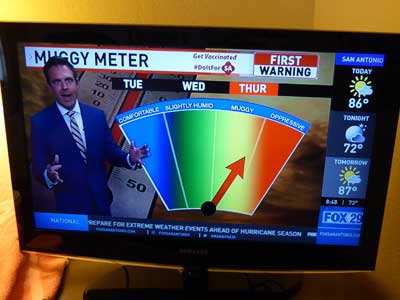
We grabbed some breakfast snacks from the hotel then set off across town to the Alamo. There were so many charming and historic buildings along the way.


The O. Henry House is an example of homes built by early German settlers. This 2-room building was built by John Kush around 1855 (but moved to this location in 1960). In 1895, William Sidney Porter (the short story writer who went by the name O. Henry) lived here for a year. Unfortunately it was closed so we couldn't peak in.




History of the building:
As we already know, Mission San Antonio began its life in 1718 with the purpose of converting the Coahuiltecan locals to Christianity and turning them into Spanish citizens. Its first location (which was just a mud hut) along the San Pedro Creek was destroyed by a hurricane in 1724. It was rebuilt here, on the east bank of the San Antonio River.

The first church was very likely a simple adobe building. Work on a stone church began in 1744 but it collapsed before it was finished. The current church was started around 1756 but was also not completed because the mission was abandoned in 1793 due to various difficulties. In its heyday, the mission complex also including living quarters for the native workers and missionaries, which together with the in-progress church, formed a defensive wall.
The abandoned complex became a military outpost for most of the 1800s. When Spanish soldiers arrived here in 1803 from Alamo del Parras in Mexico (Alamo meaning cottonwood tree), they the old mission got a new name. In 1821, as Mexico fought for its independence from Spain, they became loyal to the new Mexican government. 1835 saw the start of the Texas Revolution, and these new forces overtook the fort.
In early 1836, Mexico’s president, General Anontio López de Santa Anna, with an army of several thousand soldiers, attacked the small garrison of under 200. The Alamo finally fell after 13 days.
In 1848, the ruined compound was once again restored for military use by the US government. This is when the famous facade on the church was built.
In 1883, the property was given to the City of San Antonio, where it was used as a wholesale grocers store. In 1905, its preservation was turned over to the care of the Daughters of the Republic of Texas.
While the other four missions became part of a national historical park in 1978, the Alamo became owned by the state of Texas in 2011 as a National Historic Landmark. All five missions, however, were were designated a UNESCO World Heritage Site in 2015.
History of the battle:
1821 - Mexico gained its independence from Spain after 11 years of conflict. It first established a monarchy then a constitutional republic. In order to hold onto its northern frontier, the government encouraged colonization by offering land and a fresh start. People flooded in, including those led by Stephen F. Austin. They created new communities and had a sense of semi-independence, living so remotely.
1833 - Antonio López de Santa Anna became president. His push to centralism led to a civil war. Texans, wanting their freedom from the stricter rule, joined forces with the neighboring state of Coahuila.
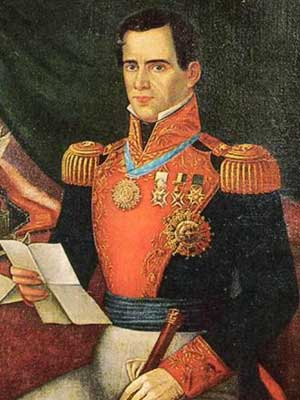
Antonio Lopez de Santa Anna Perez de Lebron (1794-1876)
1835 - The Texas Revolution began in the town of Gonzales as the Mexican Army came to retake possession of one of their cannons. Fighting broke out and the Mexican troops eventually retreated to San Antonio de Bexar. Texan forces (basically volunteer soldiers led by George Collinsworth and Benjamin Milam) followed them and more fighting ensued. Once again, the Texans won. Expecting a counter-attack, they fortified the Alamo and brought in more cannons.

The town (on the left) and Alamo (right) Click for a larger image
1836 - President General Santa Anna assembled a 6,500-man army to crush the rebellion. He sent one column to the town Goliad while he led the other to San Antonio de Bexar where they took over the town. The defenders fled into the fort, with its 18 cannons and only about 150 men. At first, discussions were attempted. But Santa Anna made it clear there was to be no mercy. And so, the Alamo answered with a shot from its largest cannon. The siege had begun. One of the Alamo's commanders, William B. Travis, send out letters pleading for help. 32 men from Gonzales arrived and more were said to be on the way, but they didn't arrive in time. Over the next 12 days, the Mexican Army fired upon the garrison.

William Travis
1836 (March 6, 13th day of the siege), Battle of the Alamo - The Mexican Army stormed the fort at dawn. The fighting lasted about 90 minutes until Mexican forces breached the outer wall and overpowered the 180-something men (the actual number seems to vary between 182 to 257 due to numerous conflicting sources), although as many as 600 (or a third) of the soldiers were killed or wounded (often fatally) durng the whole seige. The orders were to take no prisoners and anyone who surrendered was immediately slain. Among those lost that day were 26-year-old Lieutenant Colonel William B. Travis, Colonel James Bowie, frontiersman David Crockett, as well as many native-born Mexicans and Tejanos (Hispanic settlers from Tejas, Coahuila). Afterwards, all the bodies were burned in a big pyres outside the fort.
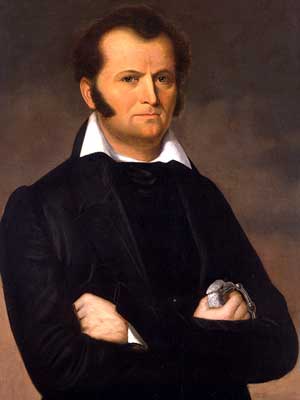

James Bowie .... and David Crockett
A small handful of people were spared to spread the warning of what would happen if the revolt continued. Most were women and children... the wives, daughters and young sons of the fighters, including Susannah Dickinson (the wife of Captain Almaron Dickinson, who was killed) and their infant daughter Angelina. However, one man in his early 20's, simply named Joe, also survived. He was the black slave of William Travis. As much of a contradiction as it may sound, many of the early Texans fighting for freedom and independence (including James Bowie) owned slaves. The Mexican government was strongly opposed to this institution and attempted to end all slavery within its jurisdiction. So perhaps that was yet another reason for the Texan revolution, a fight to preserve a way of life that was still accepted in the Southern US states.

Susannah Dickinson
1836 - Outside of Goliad, Santa Anna's second column arrived and trapped some 400 Texan army volunteers under the command of James Walker Fannin. Fannin surrendered... but he and over 300 of his men were simply executed. About a month later, some 800 Texans led by General Sam Houston (newly appointed commander-in-chief) caught up with Santa Anna and his troops along the San Jacinto River (near present-day Houston). “Remember the Alamo! Remember Goliad!" Spurred on by their desire for revenge, the battle lasted only 18 minutes (even though they were outnumbered almost 2-to-1) and Santa Anna was captured shortly thereafter. The Mexican President finally agreed to honor the new Republic of Texas. Mexican troops in San Antonio were ordered to withdraw... but not before demolishing the Alamo’s fortifications.
We began our exploration by walking around the outer complex (Alamo Plaza).

Map of the entire area, both inside and outside the current walls (click for a larger view)

The Long Barrack used to be two stories. Dating back to 1720, it's the oldest building on this site. It was originally constructed as a convento, serving as the residences and offices of the Spanish missionaries.

The curved windows used to be doors but were partially sealed up to fortify the fort during the seige. The walls are about two feet thick.

This 18th century Spanish cannon came from a shipwreck off the Texas coast in 1817. It was brought here after it was captured by Texan forces during the Battle of Bexar (1835). Following the battle of the Alamo (1836), the cannon was ordered by the Spanish general to be disabled (by cutting off the trunnions, of pivots used to support it on its mount). It was found buried a few blocks from here and restored in 2017.
caliber: 16 pounder
weight: 2,240 pounds
length: 8 feet 5 inches
diameter of bore: 5.25 inches

The carriage is seven feet wide with 66-inch-tall wheels. It weighs nearly 1,600 pounds. Based on historic documents, it would have originally been painted cobalt blue, but by 1836, it would have faded to this sky blue.

While certain pieces had to be remade (such as the metal trunnion collar and the wooden-wheeled field carriage), attempts were made to reproduce it as accurately as possible.

This iron cannon is a replicas based on writings from 1852. Two such cannons were in the fort but not used during the battle (probably due to a lack of carriages).
caliber: 4 pounder
weight: 632 pounds
length: 54 inches

Location of the 4-pounder cannons (with the red dots indicating the location of other cannons throughout the fort). In 1836, this complex consisted of the church, the convento and a large rectangular plaza surrounded by walls with barracks on the west (lower left) side. Today, only the upper right section exists.
Located along the length of the Long Barrack were several bronze models, designed by George Nelson, of the Alamo over a 300-year history. They still retained some puddles from the previous rains.

1744 - The Spanish mission, with the collapsed first stone church and rows of jacals (thatched-roofed structure with stick and clay walls)
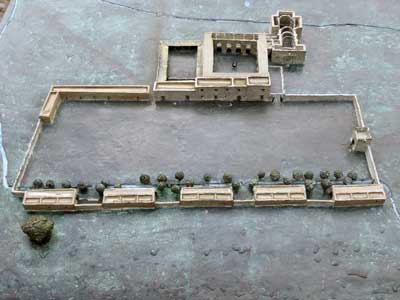

1785 - The mission with its church not yet completed, shortly before it is abandoned. Apache raids had created the need for a stone wall to enclose the mission. Note the well in the center of the courtyard.
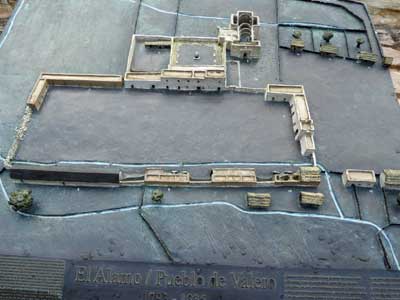

1793 to 1835 - In 1803, a Mexican cavalry (Second Flying Company of San Carlos de Alamo de Parras), consisting of some 100 men with their families, were transferred here, giving it the name El Alamo. A military hospital was established in the former convento and new barracks were built by the south gate. In 1814, thatch roofs were used to repair old rotted ones.

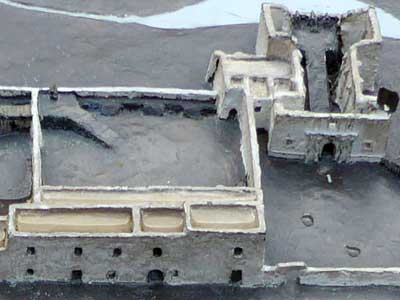
1835 - Several of the Mexican soldiers set out to Gonzales to retrieve a loaned cannon. After being fired upon by Texas revolutionaries, they returned here and began to implement fortifications... trenches, stockades, reinforcing the walls, and building long ramps and log platforms in order to fire the cannons from the tops of the walls (including inside the roofless church). After some 55 days of fighting, they surrendered, leaving the fort and town to the Texans. General Sam Houston felt the the fort was not defendable and suggested that it be blown up and all the cannons be hauled away. However, a lack of transportation animals prevented this.


More ramps with tiny model cannons

1836 to 1846 - After the Battle of the Alamo, the Mexican Army received orders to demolish the for and leave. Local Mexican families returned and began to restore their houses on the plaza. In 1840, the town council passed a law that all loose rock at the Alamo could be hauled off for 50 cents a cartload. The annexation of Texas in 1845 led to a war with Mexico in 1846.
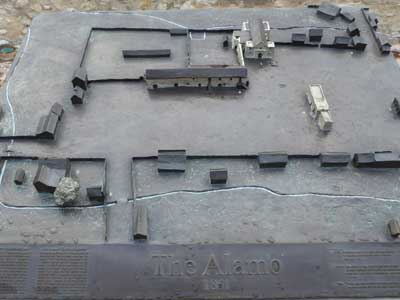
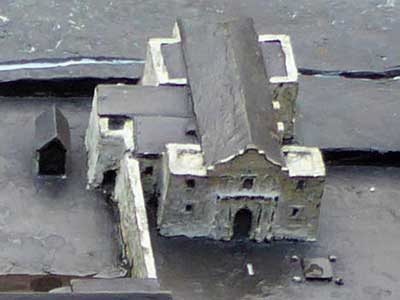
1861 - Samuel Maverick bought up most of the land and changed the area into a commercial development. He rented portions of it to the US Army, which started remodeling the old fort for military storage. In 1850, the church finally got a roof and its famous facade. In 1961, a pro-Confederate group seized the fort and held it during the Civil War. The US Army returned in 1875.

1900 - 1876 to 1900 was a period of rapid commercial development which transformed the Alamo Plaza. The convento was remodeled as a store in 1877 and it became hidden under elaborate wooden porches and fake towers. The church became a wine and liquor store. In 1884, the State of Texas bought it back to save it, and in 1904, the Daughters of the Republic of Texas purchased the Long Barrack.
The Spirit of Sacrifice (or the Alamo Cenotaph) was completed in 1939, designed by Carlton Adams and sculpted by Pompeo Coppini. A cenotaph (meaning empty tomb) is a monument erected to honor those whose remains are located elsewhere (or unknown, such as sailors lost at sea). The 60-foot tall, marble and granite piece commemorates the Battle of the Alamo of the Texas Revolution and depicts the Alamo garrison leaders (such as James Bowie, David Crockett and William Barret Travis), as well as lists 187 names of known Alamo defenders.






The Alamo's most iconic building:



At 10 am, we were admitted into the church.



An audio tour explained much of what we saw.
1) standing at the entrance
2) standing at the far end of the church (where the altar would have been)
3) monk's burial room
4) the sacristy
We weren't allowed to take any photos inside, however, a virtual 3D tour is available on the Alamo's website. I grabbed some still from the four viewing spots.

Standing just inside the entry door, looking down the length of the church toward the east (apse) wall. The walls are more than 3.5 feet thick and are constructed of rough masonry then covered with a lime plaster.
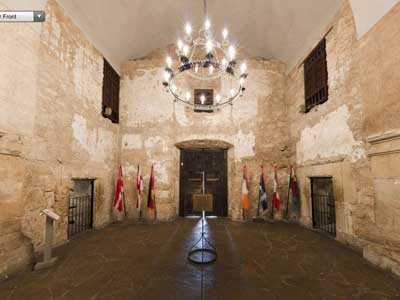

Looking back at the entry door... and up at the roof, which was added in 1850 as a wood-framed one but replaced by this concrete one in 1921
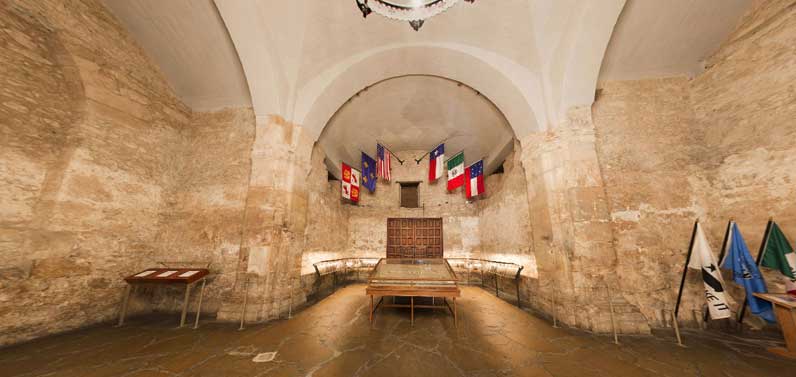
Standing at the east end of the church

During the battle, this back wall only came up to the lower ledge. An rubble-and-dirt ramp ran through the center of the church up to this point to where the cannons could be stationed. The upper section was created when the roof was built.

Looking back toward the entry door (the opening at the right leads into the sacristy)

Looking to the right...

... and to the left (the exit door is straight ahead while the opening on the left leads into the sacristy)

This was called the sacristy room. Since the chapel was never fully completed, it is thought that perhaps services were held in this room while the rest of the church was being built. The sacristy is usually the room where sacred objects and vestments are stored and where a priest prepares for the service. This was where the women and children hid during the final battle.


Looking into the church ... a close-up of the wall
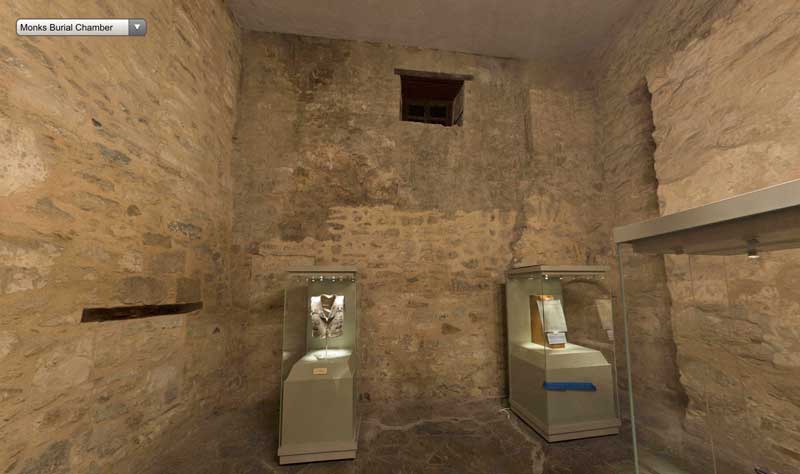
While officially called the Monks Burial Chamber, it's unclear as to whether any monk was every buried here. It was possibly meant to be a rectory (where a clergy member would live) or even as a temporary sacristy... a sort of sacristy to the sacristy room.


Looking back into the church .... and directly up (the 3D program gave all sorts of fun perspectives!)
We exited the church on the far side and explored the complex.

The exit on the north side of the church

Click for a larger view


Constructed in 1937 in the same style as the church, this was one of nine Texas Centennial Museums built to honor the 100th anniversary of the state's independence. It was renovated in 2012 and is currently the gift shop.


An original irrigation ditch (or acequia) was filled with hungry koi.
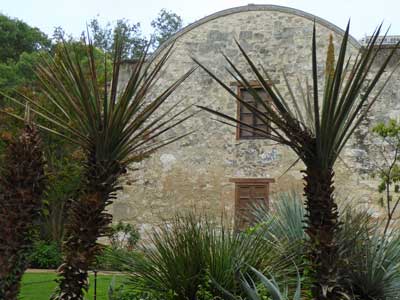

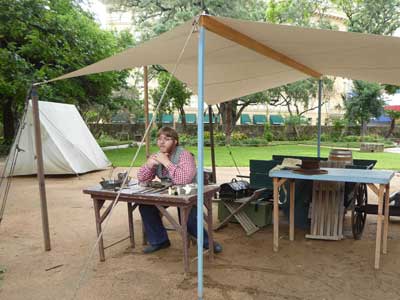

A typical encampment from the 1830s was recreated to provide a view of life at that time.


On the southwest corner of the church, a peculiar line runs through the stone. This marked the roof of a one-story prison that once stood here.


A long arcade is now home to real cannons, many used in the Battle of the Alamo. Some of them are damaged as the result of the Mexican Army's attempt to destroy them along with the fort after the war so they could never be used again.

As we wandering through the arcade, it started to rain heavily so we made a dash to get inside the exhibit hall.


return • continue

